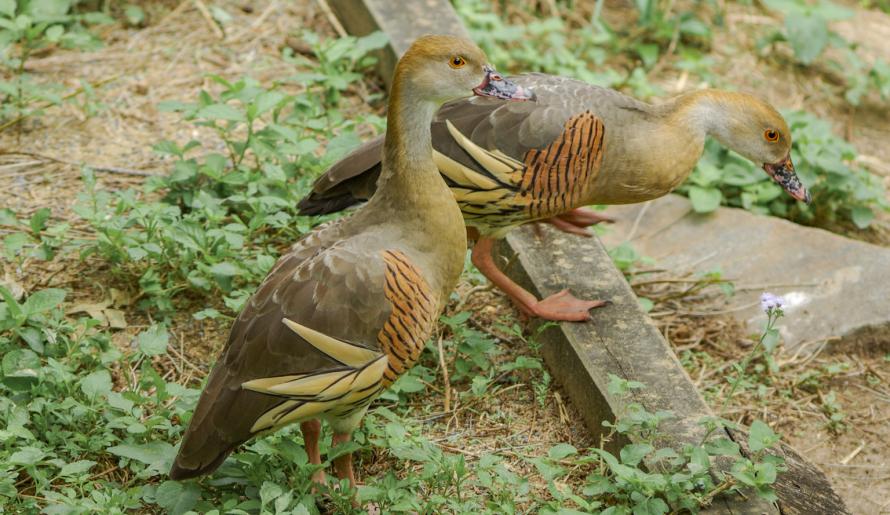
Plumed Whistling-duck
Dendrocygna eytoni
| Details | |
|---|---|
| Type | Bird |
| Group | |
| Other Common Names | Grass Whistling Duck, Red-legged Whistler, Red-legged Tree-duck |
| Biology | Breeding season: variable, usually during the tropical wet season. Clutch size is 8-14. During the day, they congregate in large numbers with other waterfowl, on the margins of lagoons, swamps and mangrove creeks, for preening and sleeping. At night they fly out, often quite long distances, to feed on grasslands. In the breeding season, they leave the water and nest on the grassy plains. |
| Distinctive Markings | Prominent long lanceolate off-white plumes edged in black along the flanks. |
| Taxonomy | |
|---|---|
| Phylum | Chordata |
| Class | Aves |
| Order | Anseriformes |
| Family | Anatidae |
| Genus | Dendrocygna |
| Species | eytoni |
The Plumed Whistling-duck are monomorphic (sexes the same colour) but males tend to be slightly larger, with longer plumes.
| Interesting Facts | |
|---|---|
| Diet | Herbivore. Grazes on tropical grasses. They pluck grass and also take food from the water by dabbling from the surface. |
| Habitat | Found in wetlands and nearby grasslands and less commonly coastal wetlands. |
| Native Status | Native to Australia |